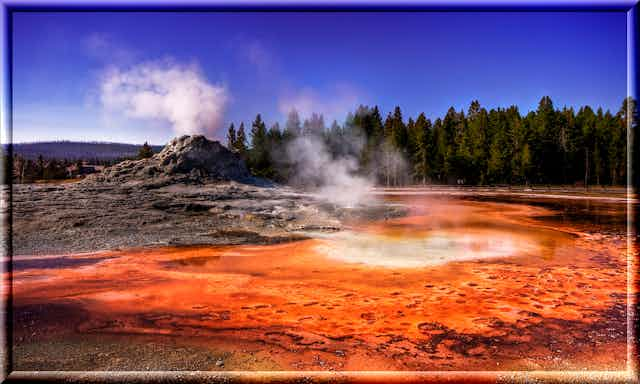Scientists have simulated the electrical energy produced in the Earth that may have led to life 3.5 billion years ago.
Using a fuel cell, researchers from the University of Leeds and NASA’s Jet Propulsion Laboratory have shown how hydrothermal vents on the Earth’s surface could have been the origin of life.
The research, published today in the journal Astrobiology, is also a step towards determining if there’s life on other planets.
In hot water
Living cells act as rechargeable batteries: they take in chemicals as fuel and convert them to usable energy. This energy drives the chemical reactions within the cell (its metabolism).
Co-author of the research paper Terry Kee said: “In terms of the way in which the [living cells’] energy is generated and used, it is very similar to a fuel cell and the process in a hydrothermal vent.”
Hydrothermal vents are openings in the planet’s surface through which heated water flows. The energy that vents generate, combined with chemical compounds found in gases and minerals, may have led to the emergence of cell metabolism on Earth.

Powering up life
Instead of focusing on chemicals involved in the origin of life, the research team focused on energy sources.
“We have built reactors which can discharge small packets of energy through chemical systems, very much in the way that a single living cell does it,” Dr Kee said.
Fuel cells used for commercial applications (such as powering electric cars) contain catalysts made of rare metal platinum. The research team replaced the platinum in a fuel cell with metals that would have been more common on the early Earth, such iron and nickel.
They found that such metals still allowed the fuel cell to function, and that other mineral components could substitute for key units within fuel cells.
“This means we are closer to building a fully functional geological fuel cell to simulate chemistry within geological environments,” Dr Kee said.
Sasha Wilson, from Monash University, said hints of early life as a sort of biogeochemical battery are preserved in the diverse range of oxidation and reduction (redox) metabolisms used by life on Earth today.
“In fact, many micro-organisms – found in common settings such as soils, lakes and rocks – use reduced metals (such as iron and nickel) in their metabolic reactions,” Dr Wilson said. “They essentially ‘eat’ metals found in minerals and rocks.”
Malcolm Walter, from the UNSW, said it’s hard to know about the beginning of life on Earth before 3.5 billion years ago.
“There are few preserved rocks of that age, and that’s a very powerful constraint on our understanding of what was going on at that time,” he said.
What is life?
Professor Walter said there are many theories about how life might have started. These theories involve hot springs, ice, dust and even arriving on meteorites.
“But they’re very difficult to test and it gets to a point where you have to ask whether it’s just speculation,” he said.
“There is no clear definition of what life is, but I think most people agree that life is an entity that processes energy and stores information and is able to replicate and transmit that information.”

Professor Walter said this new research relates to the big questions.
“It comes to the core of what life is and the meaning of life,” he said. “And the other big question: are we alone in the universe? If perhaps we’re not alone, any research that suggests how to search for life elsewhere is a useful contribution.”
He added that if we were to find other life in the universe, then we would learn profound things about the origin and distribution of life, and maybe its the future.
“So that’s why I think this sort of work is quite significant,” he said.

